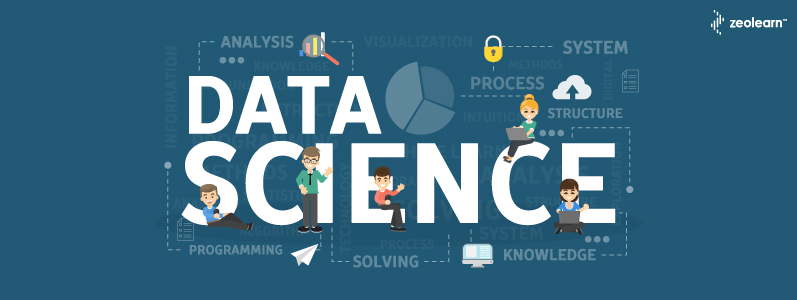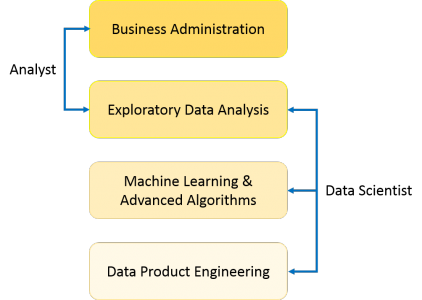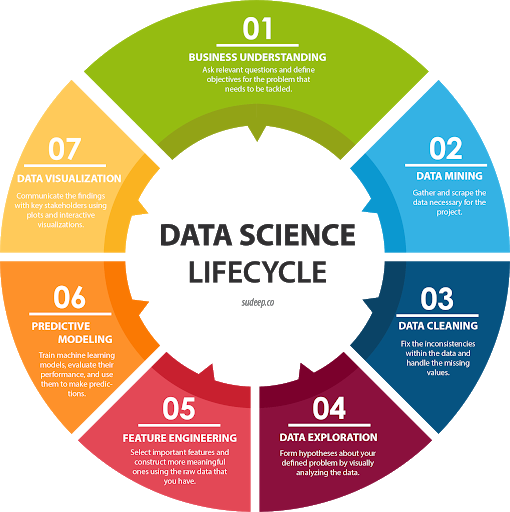 course
course
Beginner's Guide for Data Science
Data science is the study of data. The goal of data science is to gain insights and knowledge from any type of data — both structured and unstructured. Data Science is the future of Artificial Intelligence. Therefore, it is very important to understand what Data Science is and how it can add value to your business.
In this blog, topics that will be cover are as-

After reading this blog, you will understand what is data science and its role in extracting meaningful insights from the complex and large sets of data all around us. To get in-depth knowledge on Data Science, you can enroll for a live Data Science course by IT Training Classes.
Need for Data Science:
We have data in structured and unstructured form, past data was small in size and mostly in the structured form but today data is big and it has semi-structured and unstructured form.
The big data which is generated from different sources like financial logs, text files, multimedia forms, sensors, and instruments. Simple BI tools are not capable of processing this huge volume data. That’s why we need more complex and advanced analytical tools and algorithms for processing & analyzing.
Another reason for data science is weather forecasting. Data from ships, aircrafts, radars, satellites can be collected and analyzed to build models. These models will not only forecast the weather but also help in predicting the occurrence of any natural calamities. It will help you to take appropriate measures beforehand and save many precious lives.
To understand the role of Data Science, we take an example of decision making. How about if your car had the intelligence to drive you home? The self-driving cars collect live data from sensors, including radars, cameras and lasers to create a map of its surroundings. Based on this data, it takes decisions like when to speed up, when to speed down, when to overtake, where to take a turn – making use of advanced machine learning algorithms.
What is Data Science?
Data science is an inter-disciplinary field that uses scientific methods, processes, algorithms and systems to extract knowledge and insights from many structural and unstructured data. Data science is related to data mining, deep learning and big data.
How is this different from what statisticians have been doing for years?
The answer lies in the difference between explaining and predicting.

As you can see from the above image, a Data Analyst usually explains what is going on by processing history of the data. On the other hand, Data Scientist not only does the exploratory analysis to discover insights from it, but also uses various advanced machine learning algorithms to identify the occurrence of a particular event in the future. A Data Scientist will look at the data from many angles.
Business Intellegence v/s Data Science :
Sometime people got confused in both BI and data science.For the better understanding, let’s have a look-
Business Intellegence analyse the previous data for finding the insight to describe the business trends. It takes the data from internal and external resources, prepare it, run queries on it and give the answers of the questions.
Data science is the more forward-looking approach, it focus on analyzing tha past and current data and on behalf of the prediction, prepare the future data with the aim of making decision.It answers the open-ended questions as to “what” and “how” events occur.
The Lifecycle of Data Science:

1. Business Understanding
Data Scientist are the people who want to ensure that every decision made in the company is supported by concrete data and that it is guaranteed (with a high probability) to achieve results.
2. Data Mining
when you have defined the objectives of your project, now this is the time for data gathering.Data mining is the process of gathering data from different sources. Some people tend to group data retrieval and cleaning together.At this stage, some of the questions considering are — what data do I need for my project? Where does it live? How can I obtain it? What is the most efficient way to store and access all of it?
3. Data Cleaning :
Data cleaning is the time consuming process.Cleaning and preparing the data. This is especially true in big data projects, which often involve terabytes of data to work with.
4. Data Exploration :
Now that you’ve got a sparkling clean set of data, you’re ready to finally get started in your analysis. The data exploration stage is like the brainstorming of data analysis. This is where you understand the patterns and bias in your data. Using all of this information, you start to form hypotheses about your data and the problem you are tackling.
5. Feature Engineering :
Feature engineering is the process of using domain knowledge to transform your raw data into informative features that represent the business problem you are trying to solve. This stage will directly influence the accuracy of the predictive model you construct in the next stage.
We typically perform two types of tasks in feature engineering — feature selection and construction.
Feature selection is the process of cutting down the features that add more noise than information.
Feature construction involves creating new features from the ones that you already have.
6. Predictive modeling :
Predictive modeling is where machine learning finally comes into your data science project. Based on the questions you asked in the business understanding stage, this is where you decide which model to pick for your problem. This is never an easy decision, and there is no single right answer. The model (or models, and you should always be testing several) that you end up training will be dependent on the size, type and quality of your data, how much time and computational resources you are willing to invest, and the type of output you intend to derive.
7. Data Visualization :
Data visualization is a tricky field, mostly because it seems simple but it could possibly be one of the hardest things to do well. That’s because data viz combines the fields of communication, psychology, statistics, and art, with an ultimate goal of communicating the data in a simple yet effective and visually pleasing way. Once you’ve derived the intended insights from your model, you have to represent them in a way that the different key stakeholders in the project can understand.
Hope you got enough information related to data science as a beginner. Check out our Data Science course details here.

